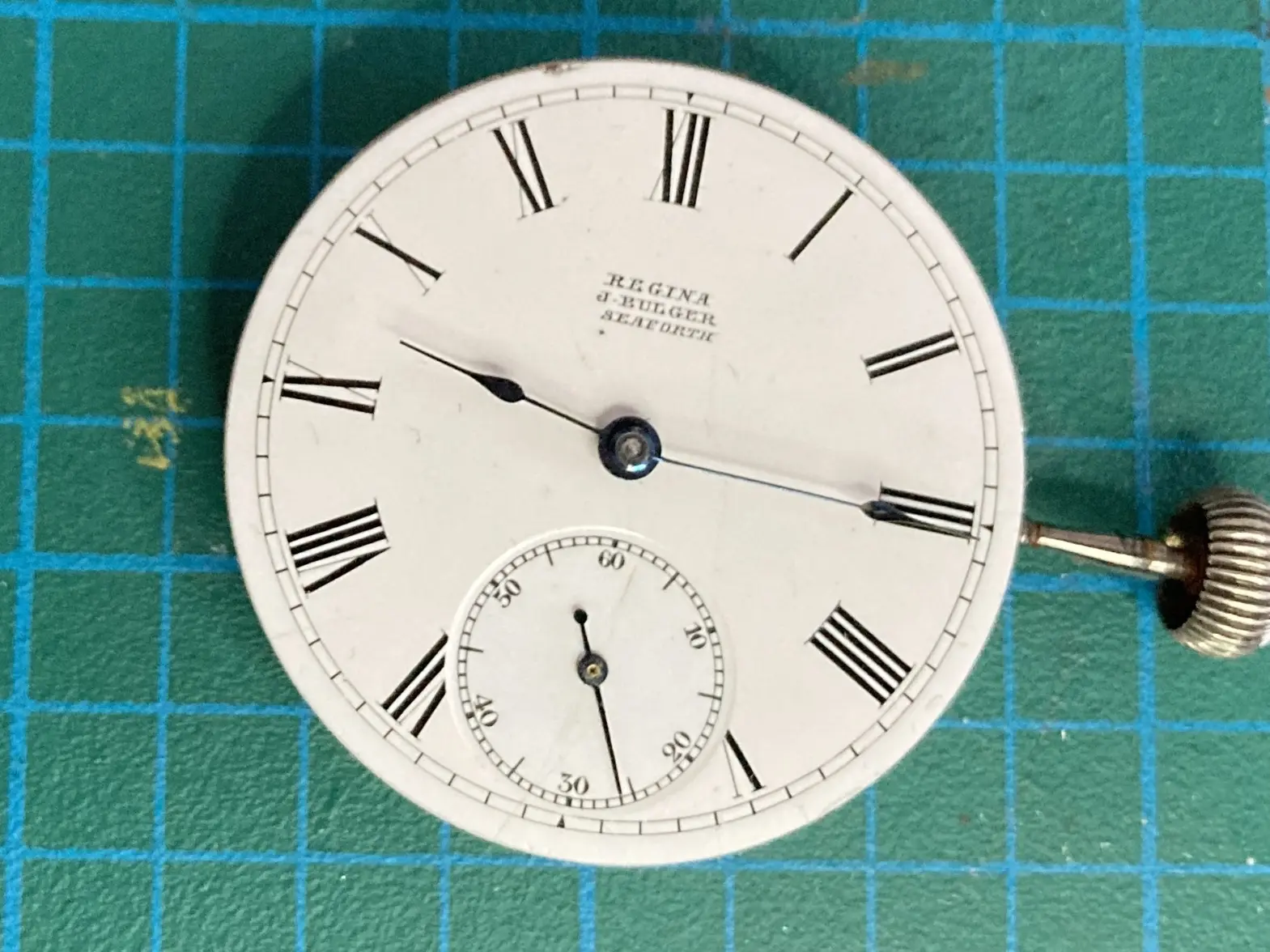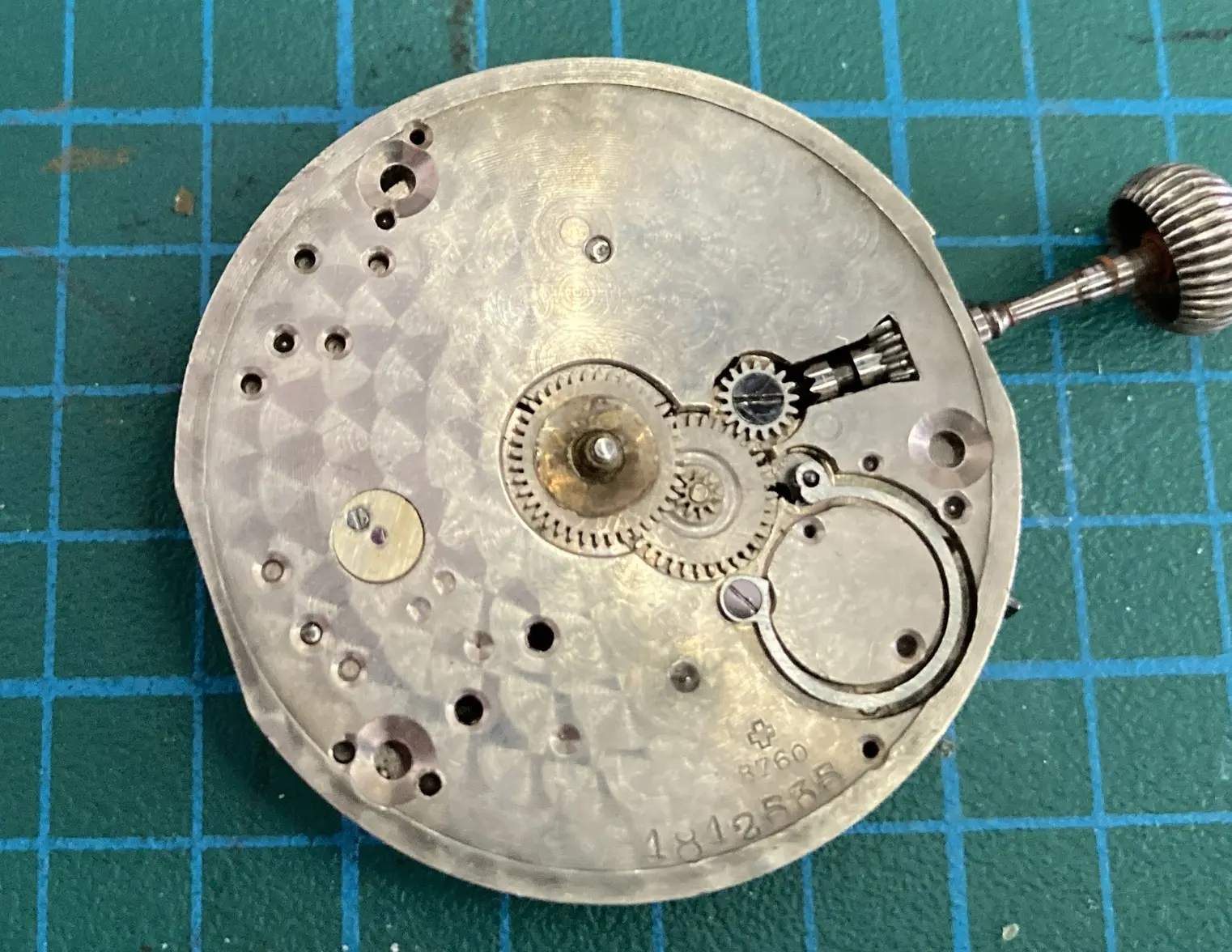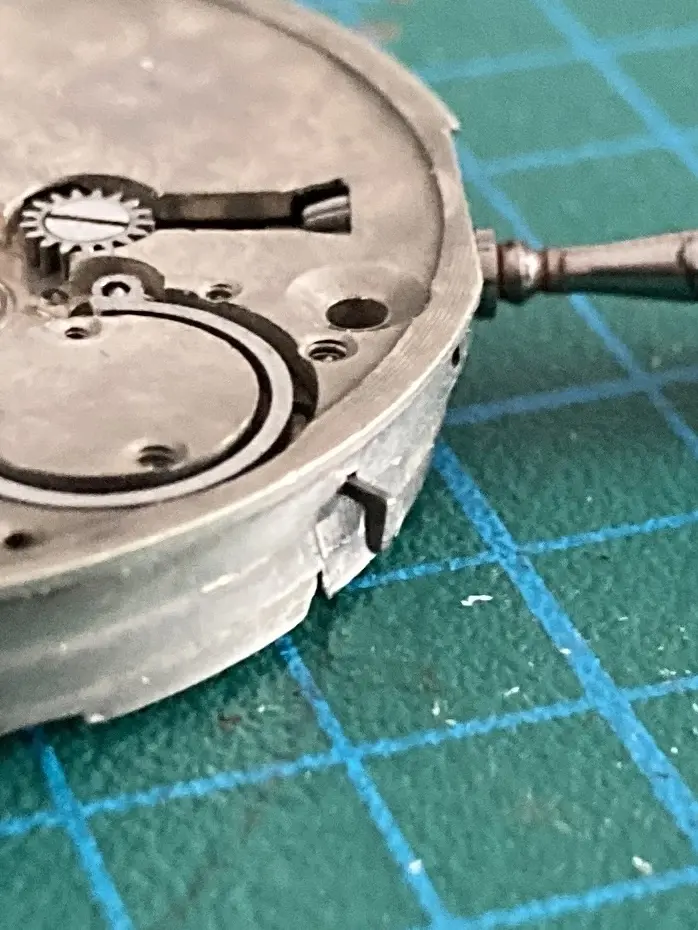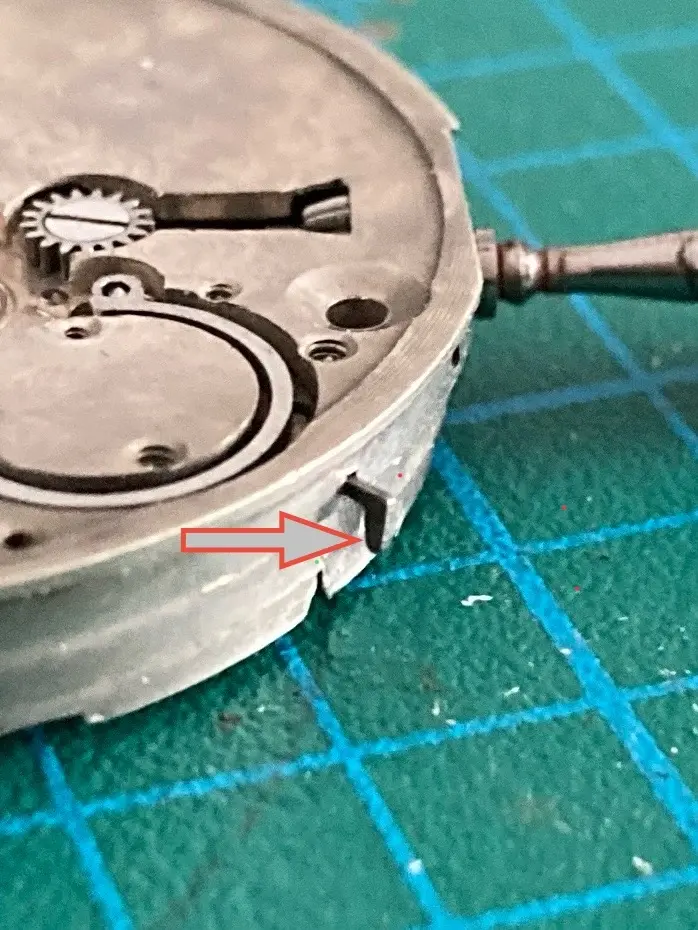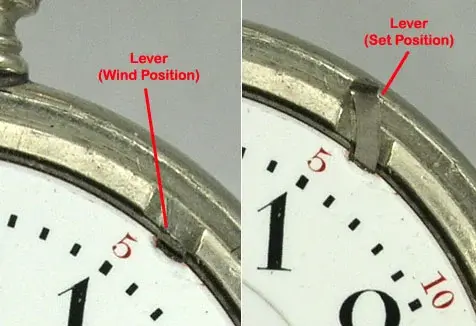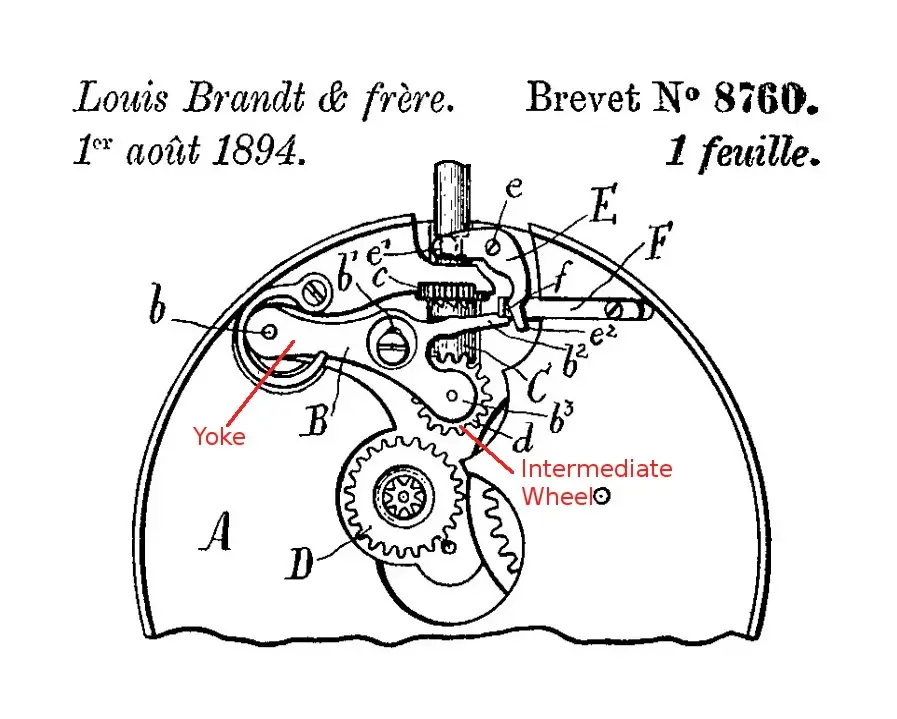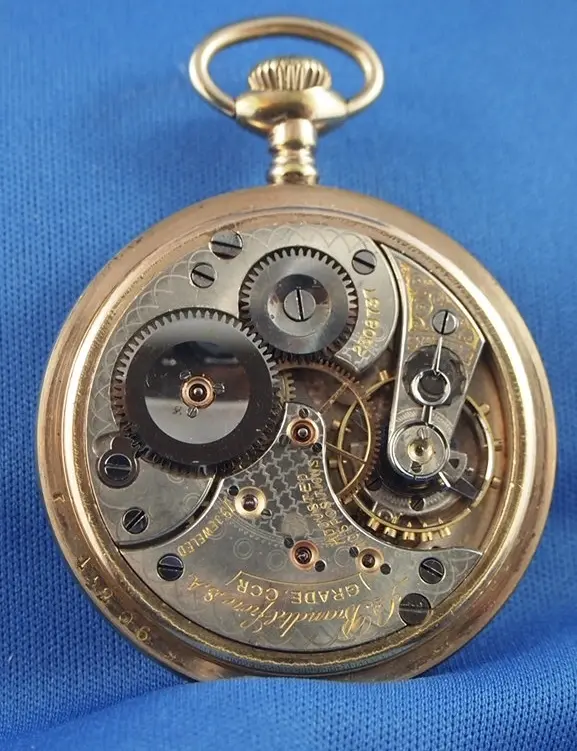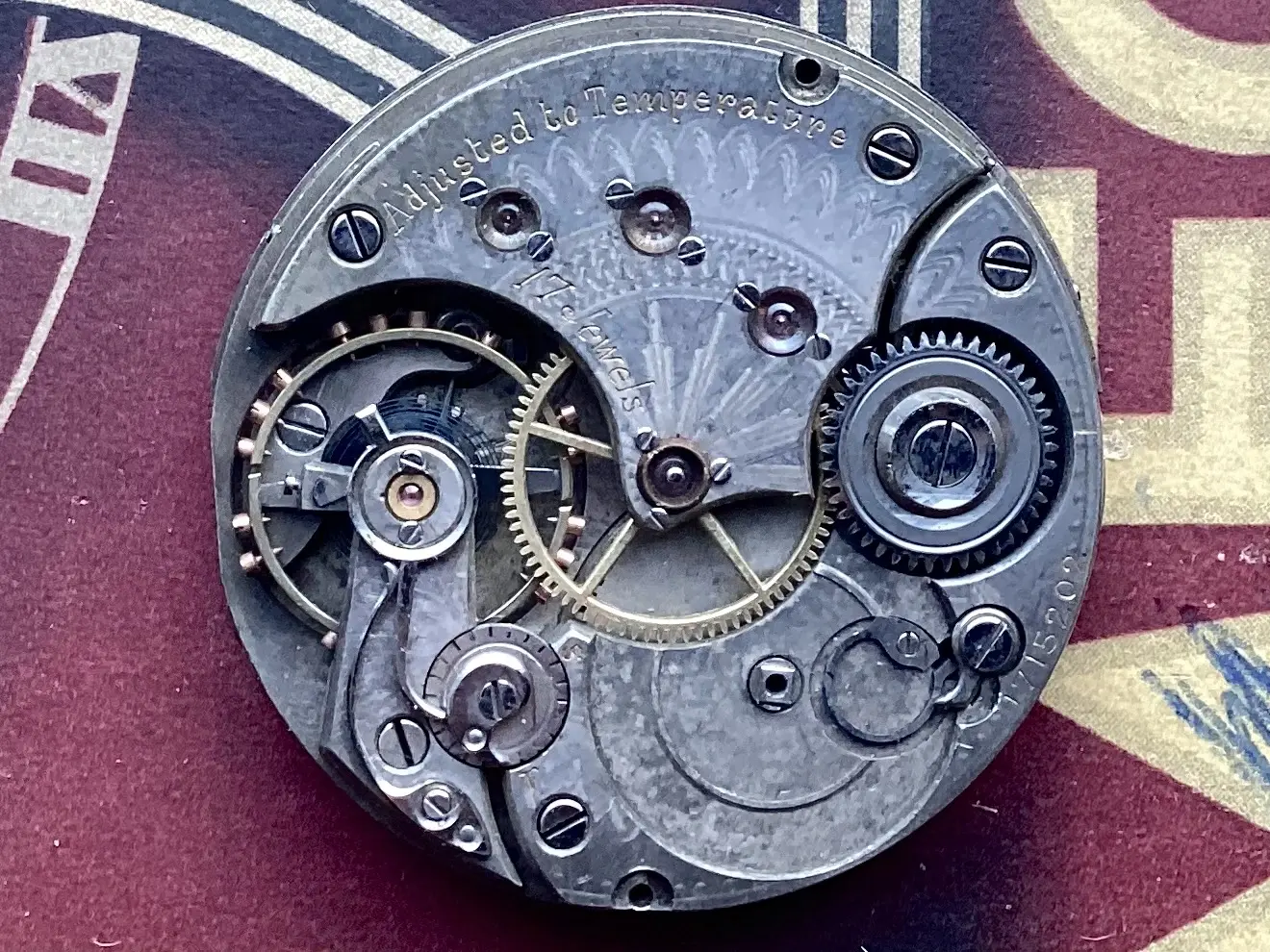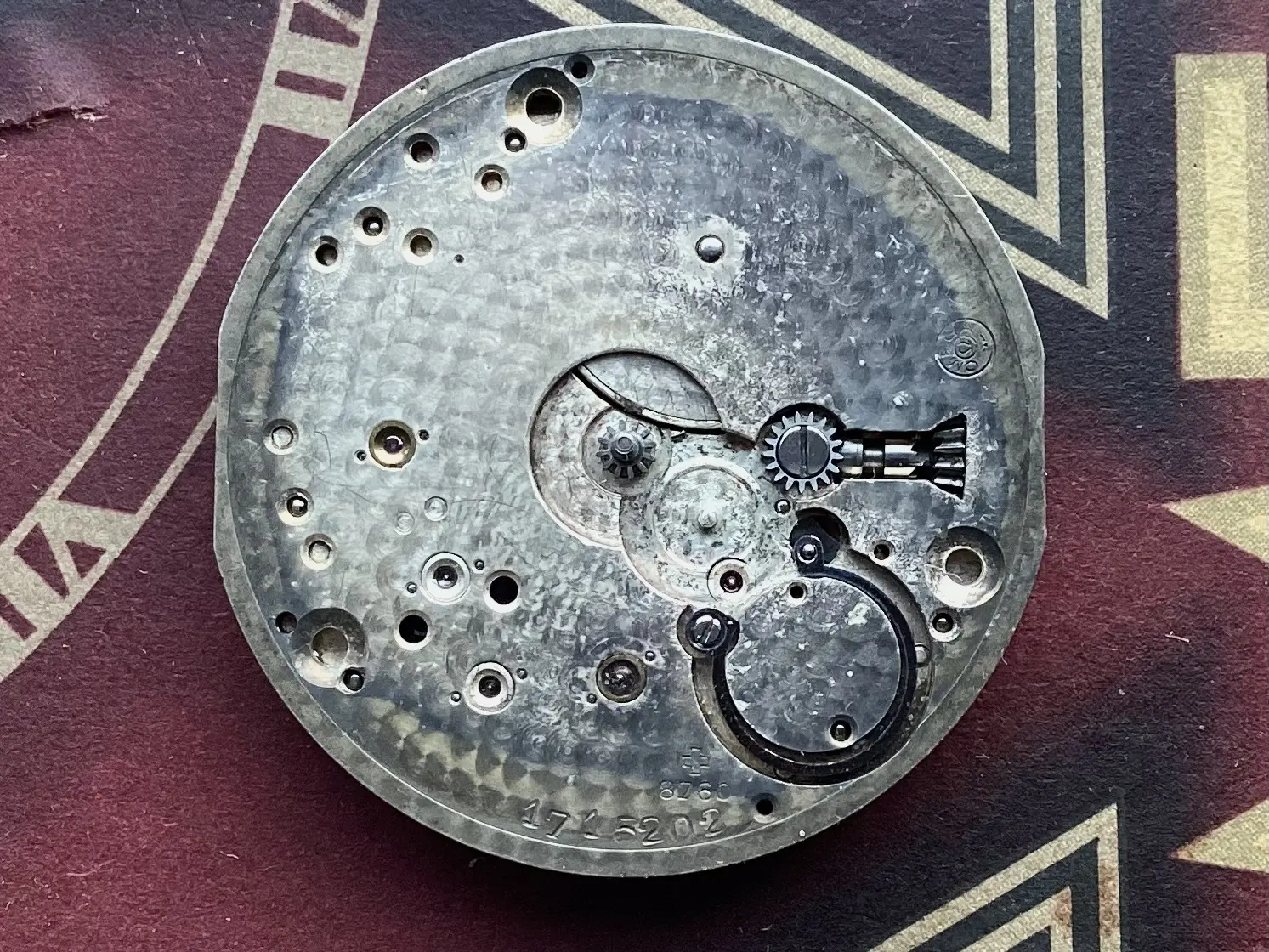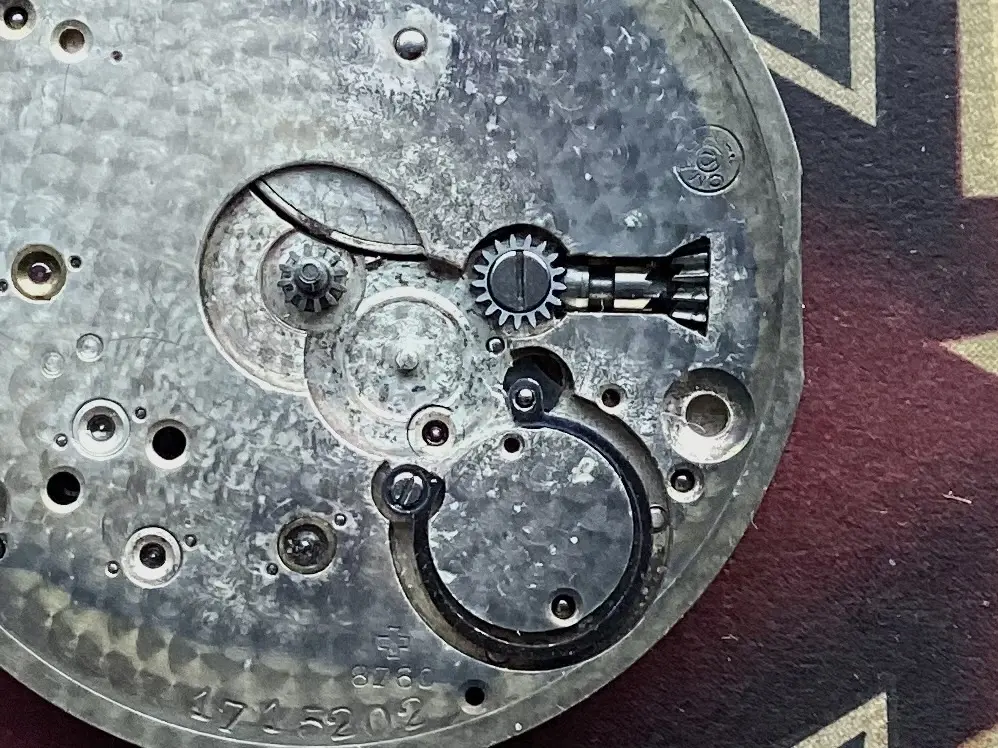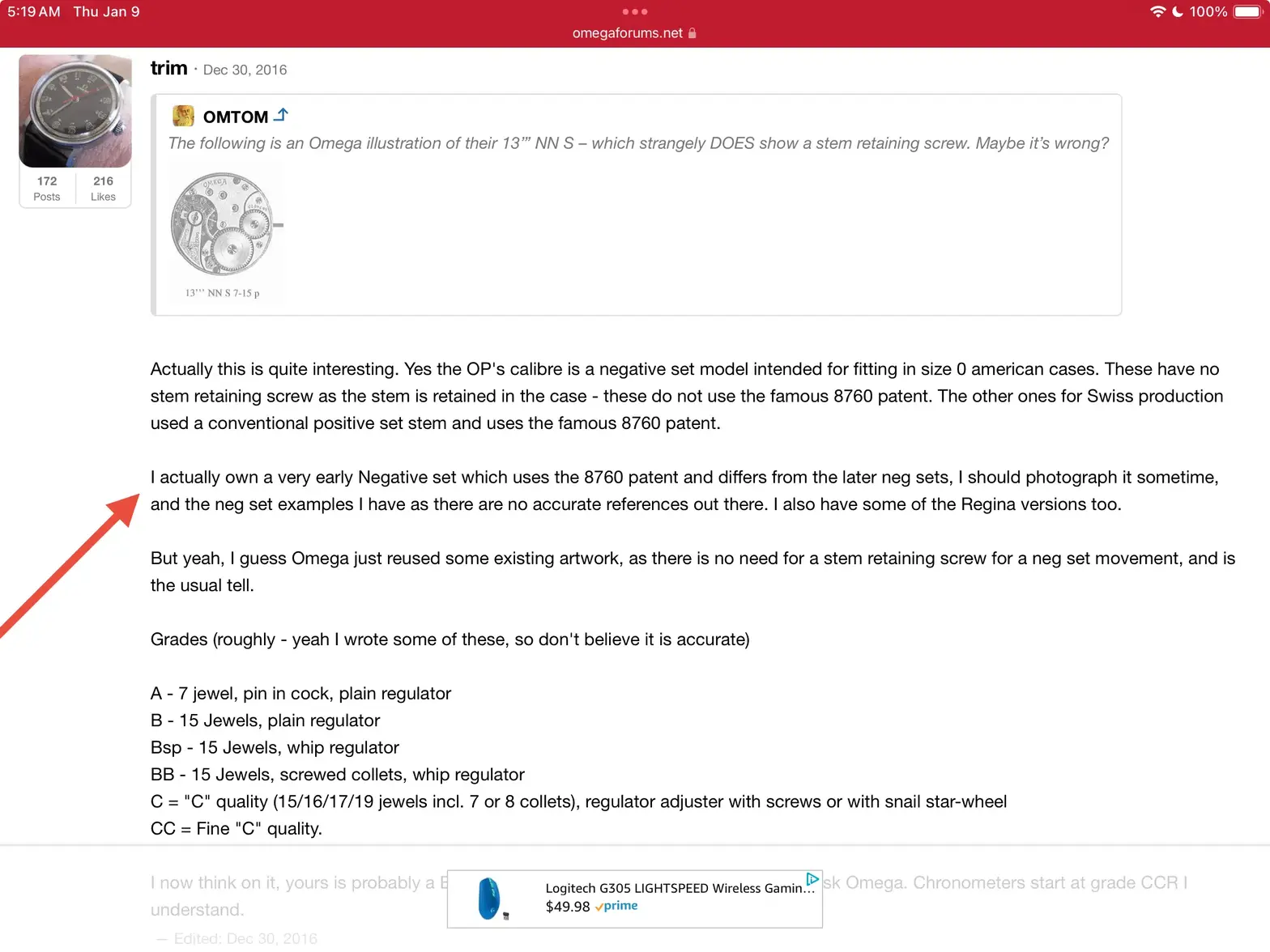pilotswatch
·Here is one that puzzles me.
This is a Regina movement and Regina signed & private dial. Regina being a sister brand of Omega.
The movement has a Omega caliber configuration. Only info found on the movement is the serial number 1812535.
It measures 32mm therefore making it a 14 ligne.
I can’t find any reference on internet or in the big book. ( A journey through time)
The setting mechanism is the puzzle. I install the movement in a pocket watch case and I can’t wind the watch.
Pushing in or out the crown , neither will wind the watch ,only change the hand position.
There is a small lever you can pull out on the side of the movement and this engages a round spring which changes the position of the winding clutch and enables the winding process.
When this lever is pull out, the movement cannot be installed in the case. When pushed in, only the hands can be moved.
Can anyone enlighten me, please.
This is a Regina movement and Regina signed & private dial. Regina being a sister brand of Omega.
The movement has a Omega caliber configuration. Only info found on the movement is the serial number 1812535.
It measures 32mm therefore making it a 14 ligne.
I can’t find any reference on internet or in the big book. ( A journey through time)
The setting mechanism is the puzzle. I install the movement in a pocket watch case and I can’t wind the watch.
Pushing in or out the crown , neither will wind the watch ,only change the hand position.
There is a small lever you can pull out on the side of the movement and this engages a round spring which changes the position of the winding clutch and enables the winding process.
When this lever is pull out, the movement cannot be installed in the case. When pushed in, only the hands can be moved.
Can anyone enlighten me, please.
